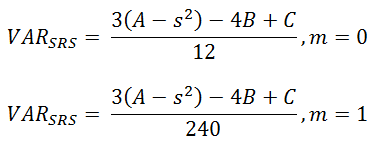Equations: Spaceballs
![]() Spaceballs for details about the probe or
Spaceballs for details about the probe or ![]() View/Print PDF
View/Print PDF
| Length estimate |

|
|
||||||||||
| Variance due to noise |

|
|
||||||||||
| Variance due to systematic random sampling |

|

|
||||||||||
| Total variance | TotalVar = s2 + VARSRS |
|
||||||||||
| Coefficient of error |

|
|
References
Gundersen, H.J.G., Vedel Jensen, E.B., Kieu, K., & Nielsen, J. (1999). The efficiency of systematic sampling in stereology—reconsidered. Journal of Microscopy, 193 (3), 199–211.
Gundersen, H. J. G., Jensen, E.B. (1987). The efficiency of systematic sampling in stereology and its prediction. Journal of Microscopy, 147 (3), 229–263.
Mouton, P. R., Gokhale, A.M., Ward, N.L., & West, M.J. (2002). Stereological length estimation using spherical probes. Journal of Microscopy, 206 (1), 54–64.
Stereo Investigator 11 | MBF Bioscience Support Center | Downloads